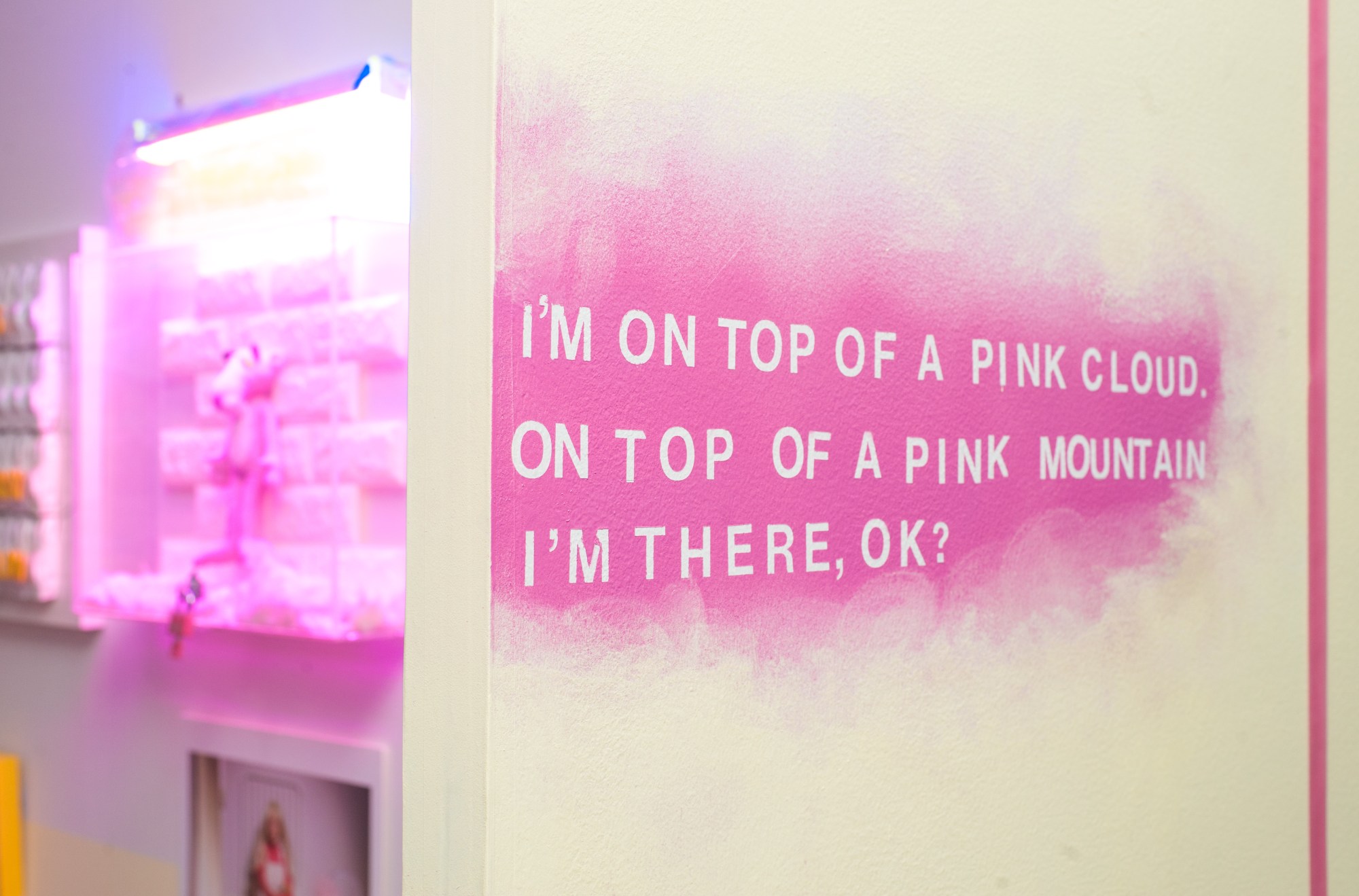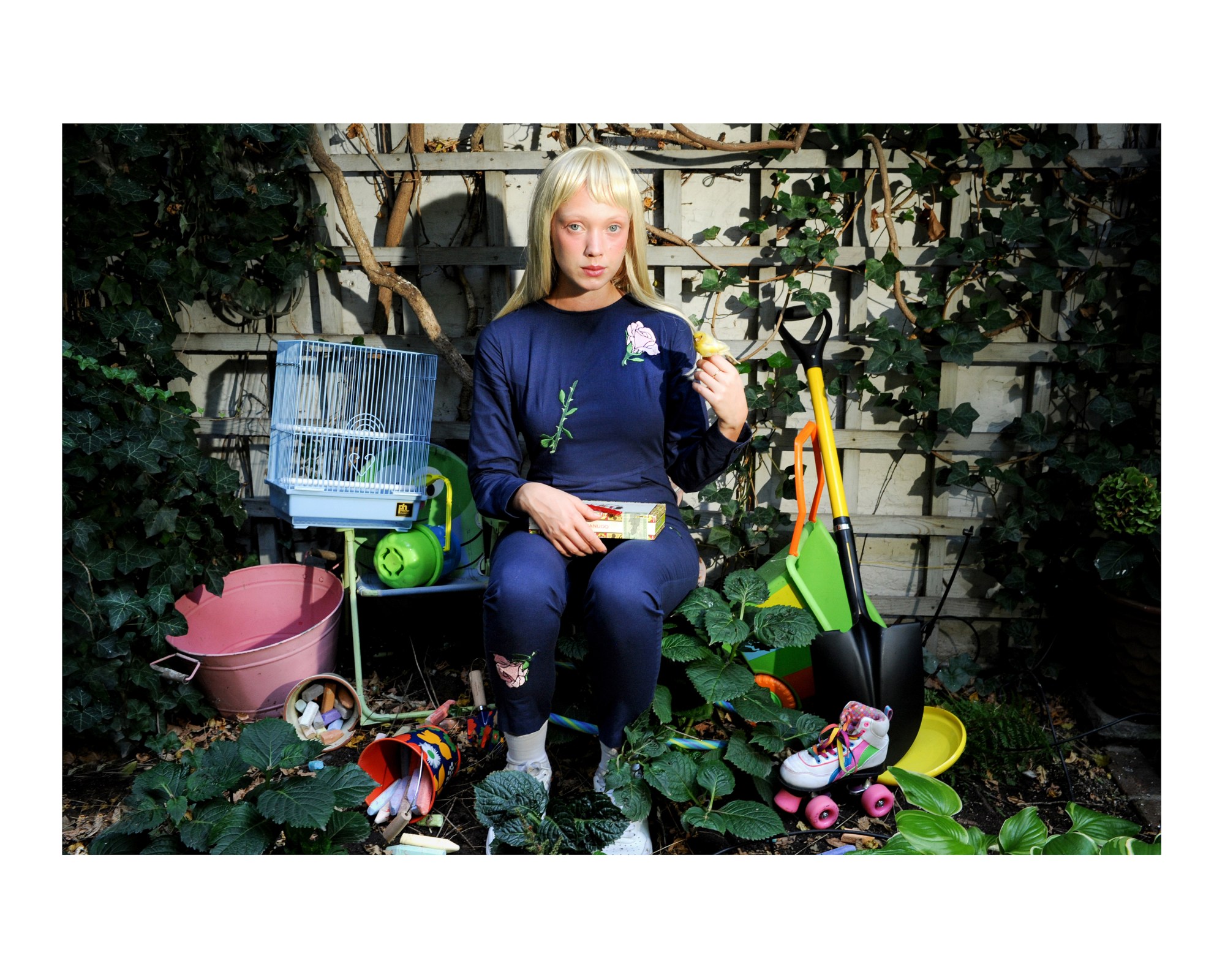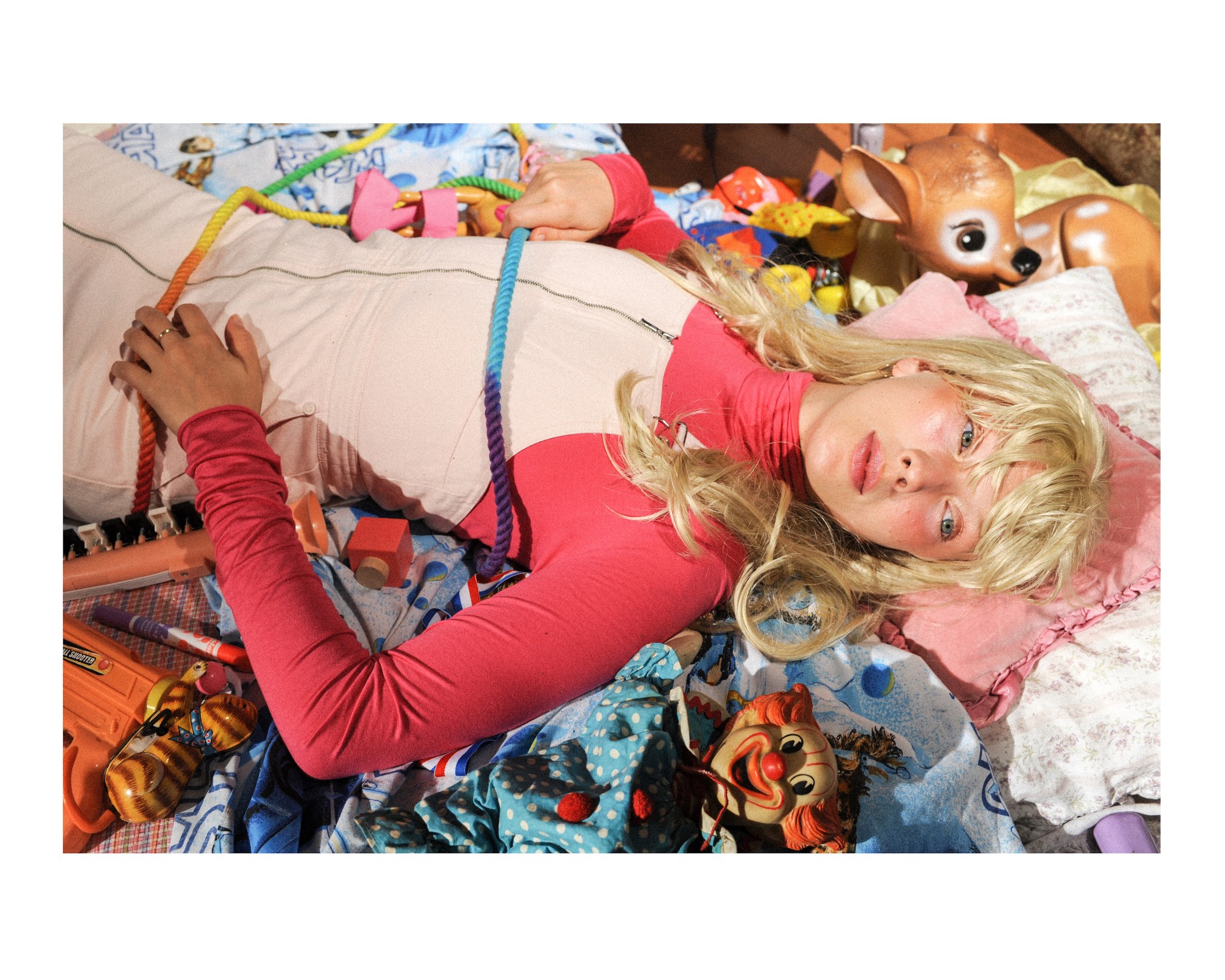The Spring/Break Art Fair has always been a wild ride, standing out like a scrappy sibling to the more established Armory Show. This year, the independent art fair featured one particular highlight: the Bennett Sisters.
Kelsey and Rémy Bennett installed a pretty-in-pink booth devoted to Angelyne, the billboard queen who took over Los Angeles with her buxom look and pink corvette in the 1980s. Though Angelyne has acted in comedies alongside Jeff Goldblum and released her own hit song, she could very well be the first ever celebrity to be famous for being famous, long before the Kardashians and Paris Hilton took hold.
As Angelyne said in an interview with The Hollywood Reporter in 2015: “I’m on top of a pink cloud on top of a pink mountain. I’m there, OK?” The same words are written out in pink stencil here suggesting what Kelsey calls her “chimera of a reality.” Angelyne may be a metaphor for the well-worn Hollywood dream, but she’s part of a larger piece here about women and their cars, post machismo. The artwork, by Kelsey Bennett and co-curated by Rémy, was shown alongside works by Emily Manwaring and Nouel Riel Kelsey, in a booth entitled The Energy of Memory.
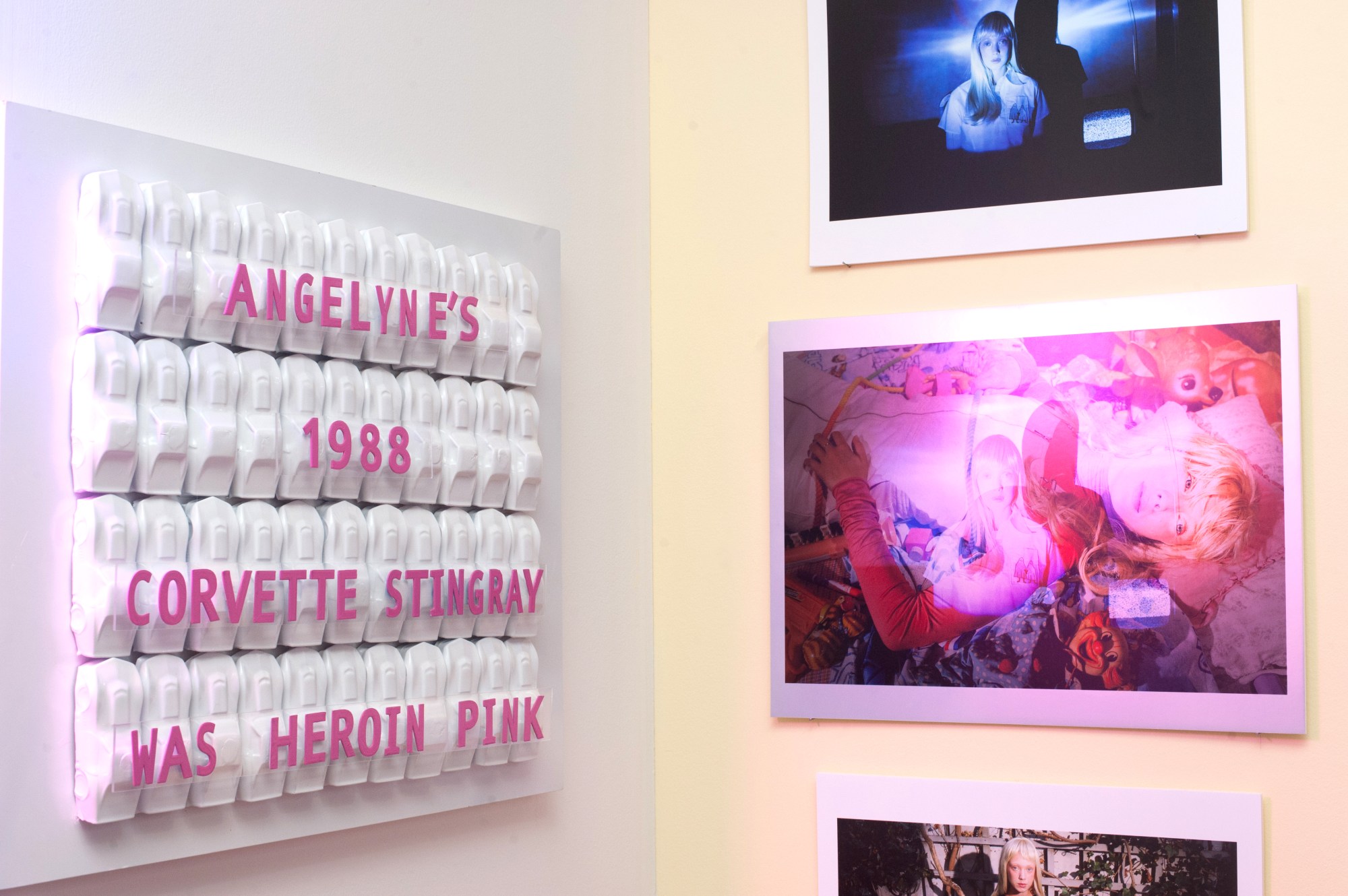
It isn’t the sisters’ first brush with fame, however. As the grand-daughters of Tony Bennett, they’ve seen fame up close and personal. Having photographed Lady Gaga, Amy Winehouse, and Aretha Franklin, and grown up with a backstage pass that the rest of us could only dream of, the duo are now putting their efforts towards documentaries about female artists, photo series that reenact childhood memories of Poltergeist, and next month, will premiere a short film about a civil rights activist from Georgia at the Tribeca Film Festival. The Bennett sisters spoke to us about the perils of fame, the hue of ‘heroin pink,’ and why car culture is finally returning to the feminine.
How did you first find out about Angelyne?
Kelsey Bennett : We first saw Angelyne in Earth Girls Are Easy, the 1988 sci-fi romance where Jeff Goldblum, Jim Carrey, and Damon Wayans play aliens that crash their spaceship into Geena Davis’ swimming pool, a perfect film for Angelyne to have a cameo! I remember being about six, seeing her and her pink Corvette and asking myself the same question so many people are inclined to, “Who is she?” I was brought up by a feminist mother who didn’t allowed me to play with Barbie so instead I found Angelyne, so much better!
What’s the best way to describe Angelyne for the uninitiated?
KB: Angelyne the Billboard Queen or Angelyne as a self-made cultural phenomena. The description that peaks people’s interest is when I say she was the first person who was famous for being famous. In today’s zeitgeist, it captures people’s attention as if Angelyne could be the missing puzzle piece in the conundrum which is our collective obsession with fame.
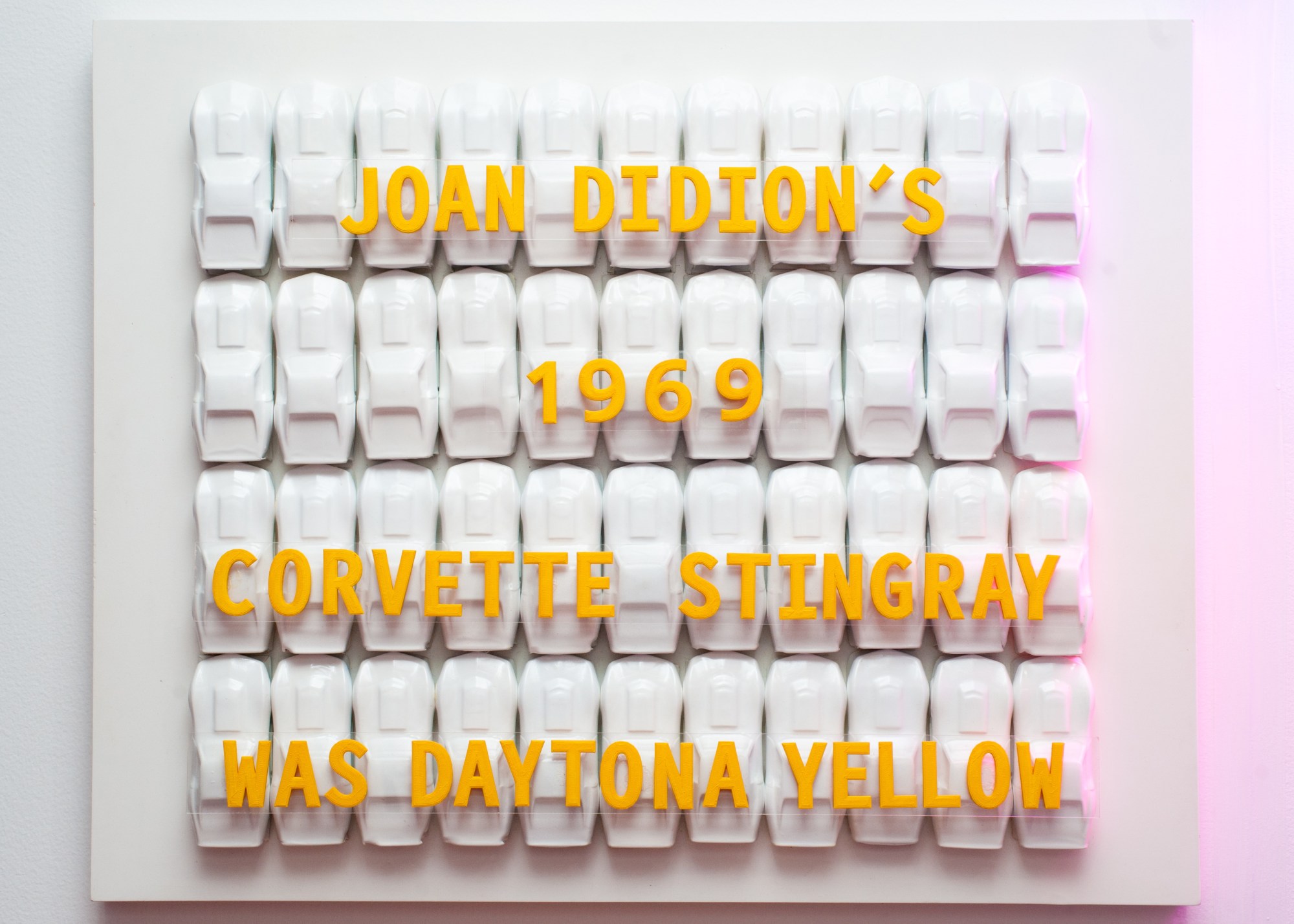
Is she marginally famous, more famous in her mind, or world famous?
KB: Angelyne embodies the spirit of fame. Her persona can be used to hold up a mirror to the concept of fame and the desire for it, but also can be used to appreciate the artistry of self-created identity. I defer to another queen of self-invention to finish that thought. RuPaul has been quoted as saying, “when the power of love overcomes the love of power, the world will know Angelyne,” reported Gary Baum in The Hollywood Reporter.
The artwork reads: “Angelyne’s 1988 Corvette Stingray was heroin pink,” what’s the story behind that?
KB: There is a very specific process that goes into the customization of Angelyne’s cars. The paint mixtures are the same in that they all contain glitter and metallic, but the shade of pink has evolved over the years. Supposedly her first custom color was decided upon when she kissed a napkin and told the mixer to match the shade of her kiss. Her most recent custom paint concoction she has coined as Heroin Pink.
Really?
KB: Her 1988 Corvette Stingray was not actually heroin pink. For my piece, I reinterpreted the facts for the purpose of my own narrative and subliminal references to the lure that is Angelyne. I read an article recently where Angelyne talked about having had a metal pyramid installed above her bed around the time she filmed Earth Girls Are Easy, she said she laid in bed and kept seeing the vision of magenta vibrating. She also said she had a cosmic out of body experience, one which she has since been trying to return to. The film was released in 1988, so the year I chose references that metaphysical happening in hopes that Angelyne will one day return to the cosmic place she longs to be.
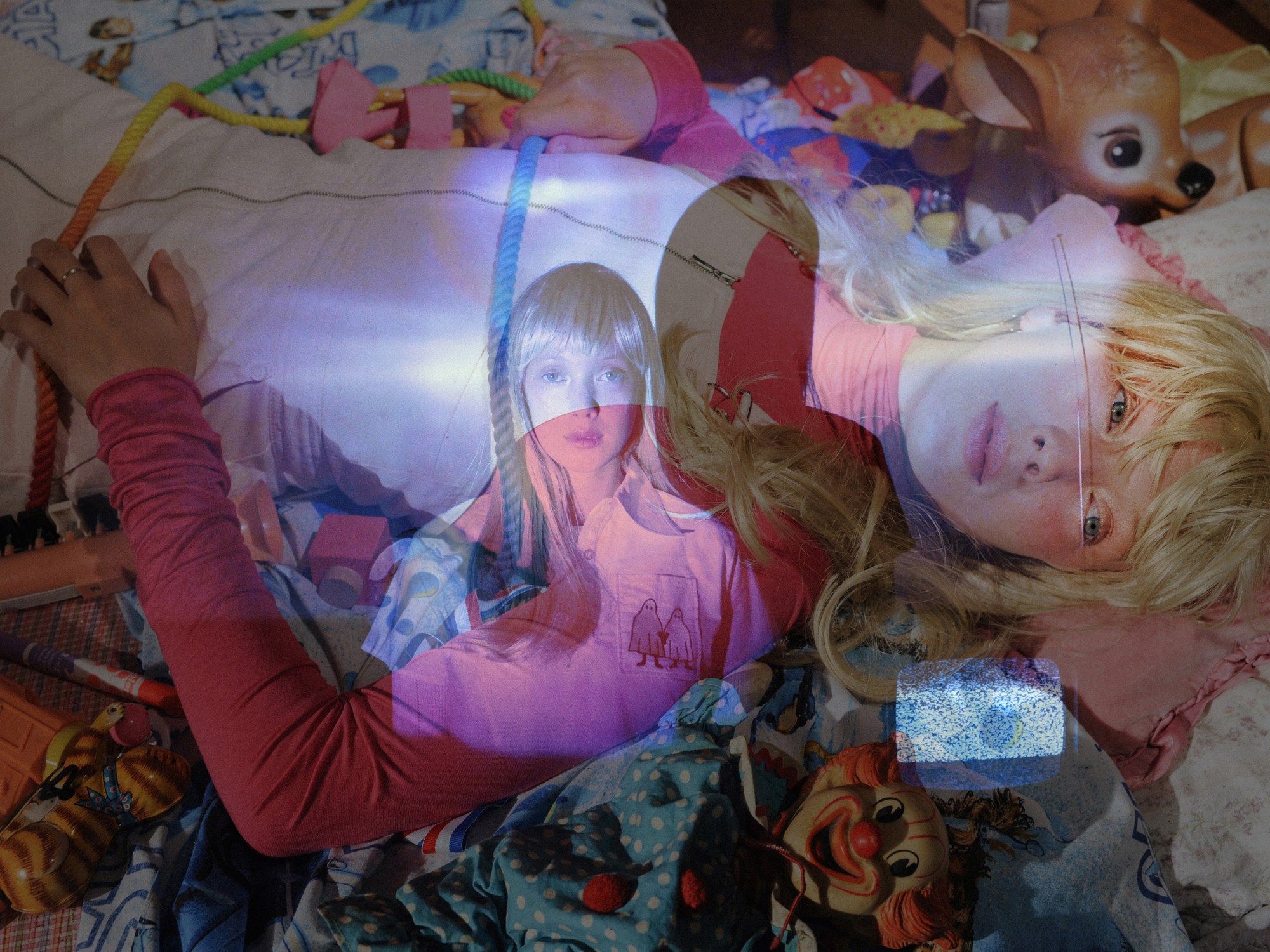
Why did you want to pair up Angelyne with Joan Didion’s comment on the yellow car?
KB: I like to refer to Didion’s Daytona Yellow and Angelyne’s Heroin Pink as sister pieces. Both Angelyne and Joan Didion are cultural icons associated with Los Angeles. The two women fall on very different sides of the spectrum in terms of genre, but still I so strongly identify with both of them. As a city Los Angeles presents in extremes — from its dark underbelly to its bright lights.
Having a grandfather like Tony Bennett, is there always a flip side to fame that we don’t always see? If so, what is it?
Rémy Bennett: There is a darkness that goes hand in hand with star or celebrity worship and that is something that has fascinated us from a young age, and informed a lot of our work. The dangerous seductions, false promises and Faustian bargains that rely on illusions is so much of what drives the fame or star machine, emblematic of Hollywood and the culture surrounding it. The constructed narratives that form a public persona, which often has little to do with the real person, can be dangerous, especially when we project our hopes, dreams and expectations onto them.
How does this tie into your Poltergeist photo series?
RB: Celebrities, stars, and characters in cinema populate our collective consciousness, in the same way that movies exist in a realm of collective memory, a shared dream. Through the recollection of films we engage in a shared fantasy even with strangers. As our real memories erode, blurring the lines between fact and fiction in our own personal histories, films in their preservation of memories give us the means by which to recall. Kelsey and my compulsion to reenact scenes from Poltergeist as children created a melding of recall between what occurred within the film and what occurred within our own childhoods.
Why draw a connection between women and cars? I know in the past you’ve both been cited as pioneering artists who feel feminism is implicit.
RB: To me, a car represents freedom and independence, a symbol which is so often associated with men and not often enough with women. I remember, as a child, seeing car magazines with images of big breasted women and sports cars on the covers. It plays into the public perpetuation of a commodified toxic masculinity which we are now seeing come to a head now, more than ever. Marketing power and strength to men through the promise of ownership, those images were saying ‘you can own this car… and this woman.’ It was a message which I was not able to unpack at such a young age, but I knew something was off about it.
